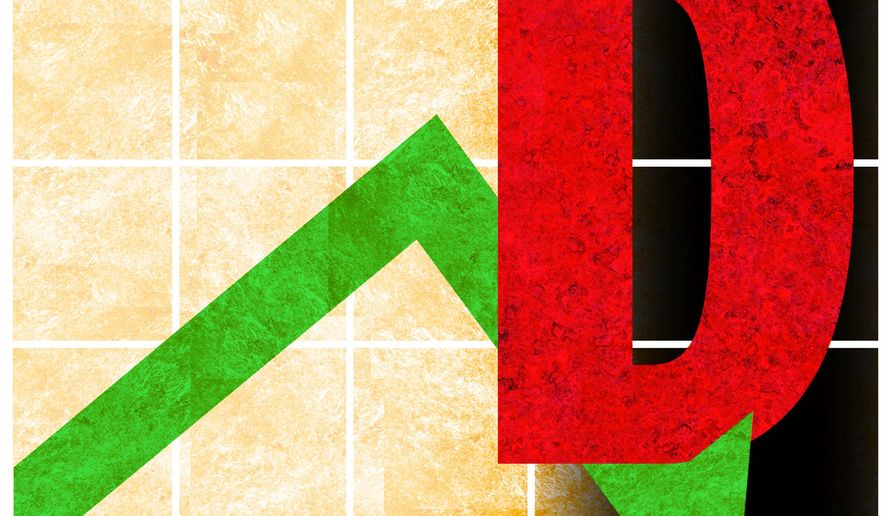OPINION:
Every now and then, sandwiched between breathless accounts of the latest political fights on Capitol Hill, a report on the rising tide of deficit spending appears. Then everyone goes back to squabbling about the most recent scandal, and the deficit again slips off the radar screen.
In a sense, it’s hard to blame people for putting spending on the back burner. For one thing, few lawmakers on either side of the political aisle even bring it up — although, as we’ll see, they certainly should. Out of sight, out of mind.
For another, we’ve been hearing about the deficit for years, and, well, the sky hasn’t fallen. So do we really need to worry?
In a word, yes. The latest edition of “Blueprint for Balance” by The Heritage Foundation proves that conclusively. Things may look rosy now, and yes, the economy is quite strong now. But at our current rates of spending, we’re hurtling toward well, not a cliff, but a ravine — and a very deep one at that.
It’s a simple problem to understand. You can’t spend more than you take in forever. You can mask the problem for a while by using credit cards, but if the problem isn’t addressed at some point, you’re asking for trouble.
Individuals can’t spend more than they take in. Families can’t do it. And neither can governments. Oh, the latter can paper over the problem for longer, but sooner or later, the bills come due for everyone.
Still, some Americans may assume overspending is a problem for government, not them. Wrong.
“The impact will be felt by all Americans,” the Heritage report says. “Economic research shows that countries carrying such high levels of debt, especially if the debt is on an upward trajectory, experience slower economic growth. Slower growth means less take-home pay for workers and fewer opportunities for Americans to improve their economic well-being and attain financial security.”
Think of our growing economy as a hot-air balloon. Thanks in large measure to policies such as the Trump administration’s drive to cut taxes and reduce unnecessary regulations, it’s trying to soar. And for now, it’s able to do so.
But growing levels of deficit spending are like a huge sandbag tethered to the balloon. It’s acting like a drag, keeping the economy from rising as high as it otherwise could. And that sandbag is growing all the time, getting heavier and heavier.
Worse, the fastest growing portions of the federal budget — Social Security, health care, and interest payments — are on automatic pilot. If lawmakers do nothing, those three are on track by 2041 to consume every dollar the government takes in.
That doesn’t mean we can wait 20 years to fix this, by the way. The longer we let it go, the harder it is to fix, and the deeper we get into the ravine.
We’d all feel it — through inflation, for example. Through higher prices on everyday goods and services. Through higher interest rates, which would make it tougher to get a loan to start a business, purchase a car, or buy a better house.
That’s what deficit spending amounts to. It’s not some dry economic problem for Congress. It’s something that, left unchecked, will weaken our economy. Cause prices to rise. Put dreams of home-ownership and becoming their own boss out of reach for many Americans.
It’s a shame Heritage’s “Blueprint” isn’t viable in today’s toxic political environment. If implemented, it would reduce spending by $10.8 trillion over 10 years and eliminate budget deficits by 2029, as well as permanently extend the Tax Cuts and Jobs Act of 2017 and cut taxes by $800 billion.
Like so many problems, this can be fixed — provided lawmakers are willing to do what it takes. Now’s the perfect time, when the economy is still strong, to press them to do just that.
• Ed Feulner is the founder of The Heritage Foundation (heritage.org).




Please read our comment policy before commenting.